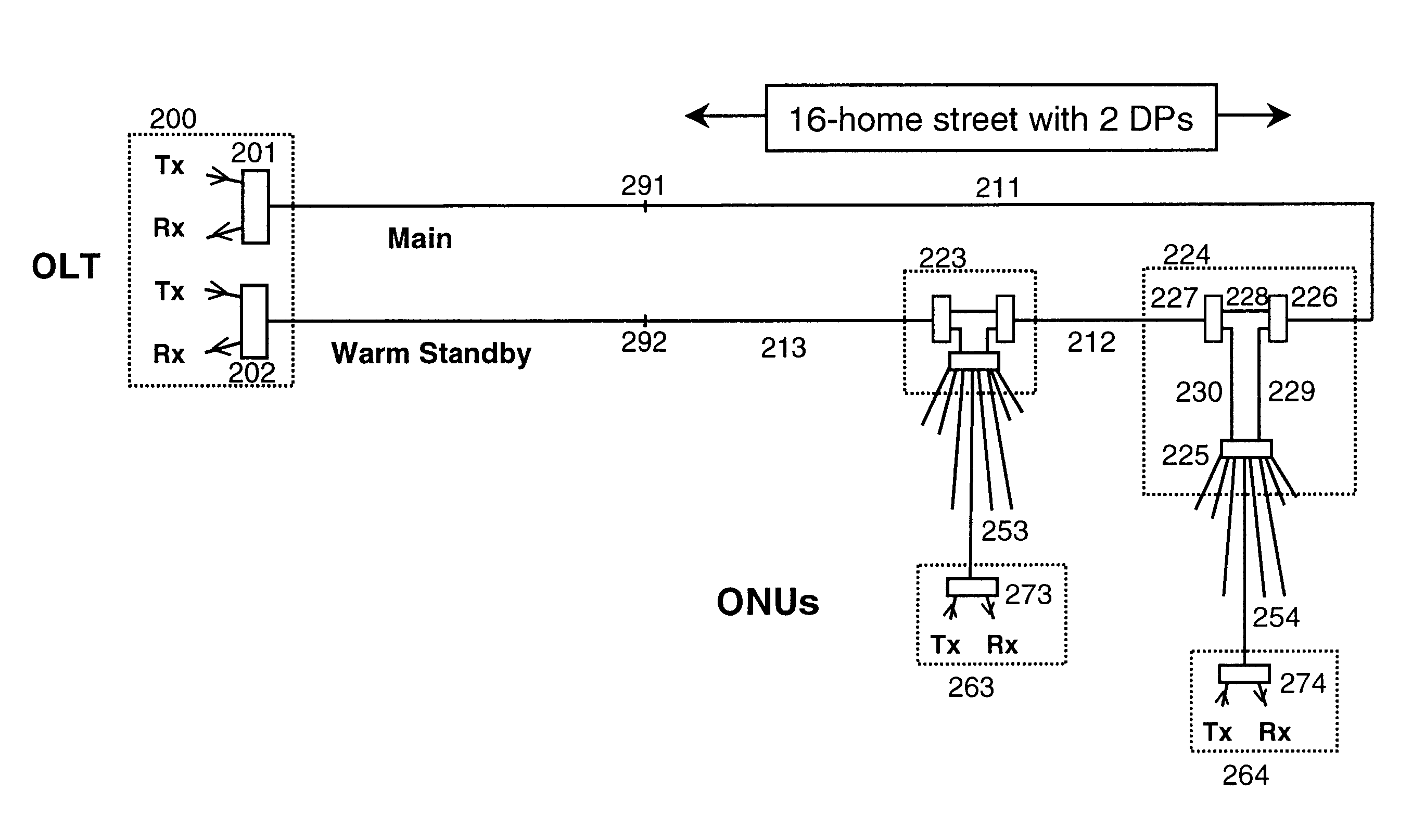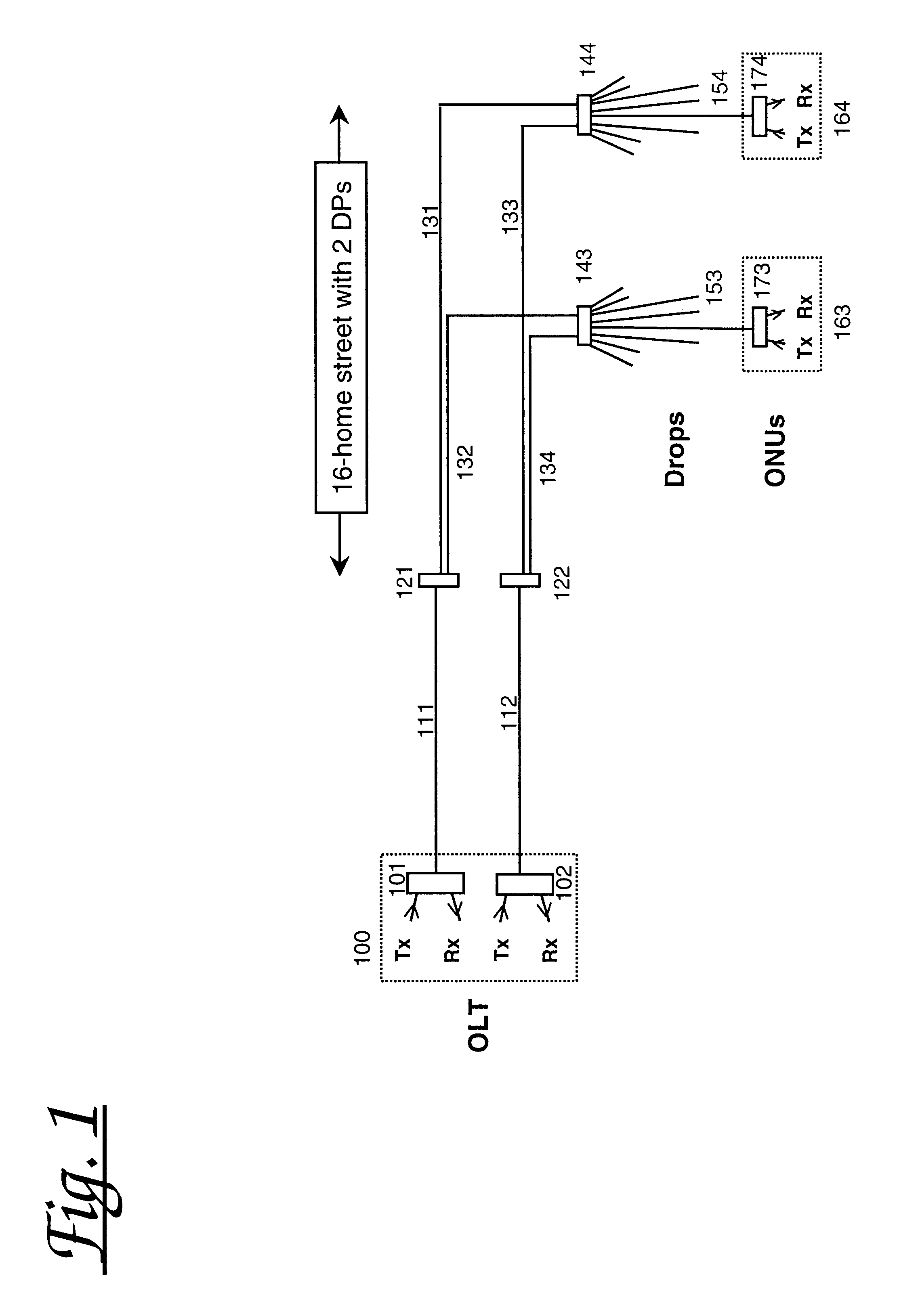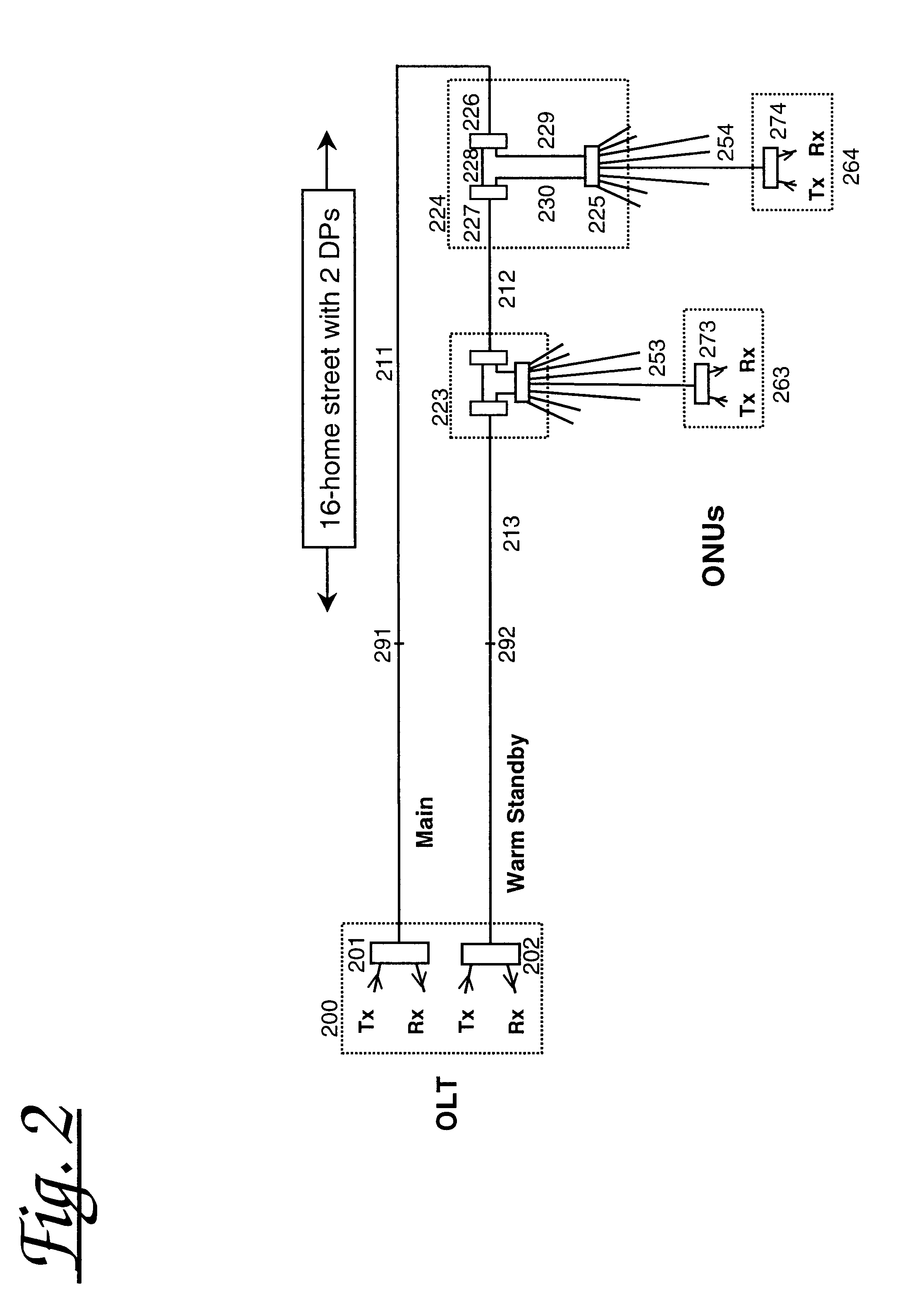Passive optical network arrangement
a technology of optical network and optical elements, applied in multiplex communication, instruments, optical elements, etc., can solve the problems of excessive cost, excessive duct congestion, and high cost, and achieve high loss path, high loss path, and high loss path
- Summary
- Abstract
- Description
- Claims
- Application Information
AI Technical Summary
Benefits of technology
Problems solved by technology
Method used
Image
Examples
Embodiment Construction
FIG. 1 shows, for comparison purposes, a protected PON according to the prior art arranged for distributing signals between an Optical Line Terminal (OLT) 100 and multiple Optical Network Units (ONU's) 163, 164. Specifically the arrangement comprises an OLT 100 comprising first and second optical transceivers 101, 102 connected via fibre feeder lines 111, 112 to initial distribution splitter / combiners 121, 122 respectively. Each of the initial distribution splitter / combiner is connected by means of fibre distribution lines 131-134 to each of two drop points each comprising an optical splitter / combiner 143, 144 respectively. The drop point splitter / combiners 143, 144 are each connected via final drop distribution lines 153, 154 to subscriber ONUs (of which two are illustrated 163, 164). Each optical splitter / combiner is shown with eight associated final drop distribution lines, though only one ONU is shown per optical splitter.
For the arrangement shown, losses in each of the initial ...
PUM
 Login to View More
Login to View More Abstract
Description
Claims
Application Information
 Login to View More
Login to View More - R&D
- Intellectual Property
- Life Sciences
- Materials
- Tech Scout
- Unparalleled Data Quality
- Higher Quality Content
- 60% Fewer Hallucinations
Browse by: Latest US Patents, China's latest patents, Technical Efficacy Thesaurus, Application Domain, Technology Topic, Popular Technical Reports.
© 2025 PatSnap. All rights reserved.Legal|Privacy policy|Modern Slavery Act Transparency Statement|Sitemap|About US| Contact US: help@patsnap.com



